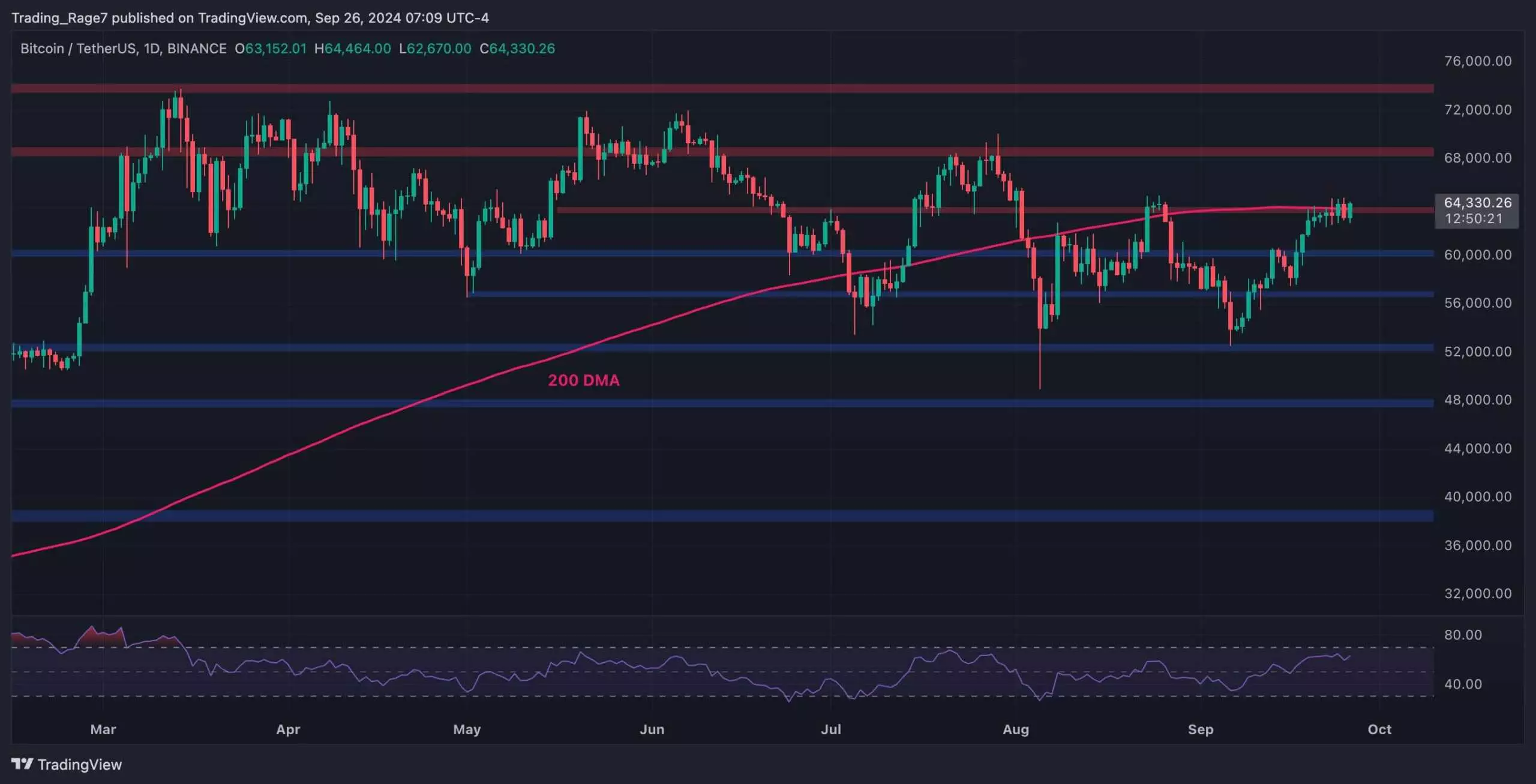Bitcoin, often viewed as the bellwether for the cryptocurrency market, stands at a pivotal point in its pricing history. Currently trading near the significant $64K resistance level, the asset’s movement is under intense scrutiny. Recently, the price momentum has been on an upswing, bouncing back from critical support at $52K. This resurgence saw Bitcoin breach both the $56K and $60K marks, signaling strengthened bullish sentiment. Market analysts are now keenly observing the asset’s interaction with the 200-day moving average—it is a pivotal junction that could either launch Bitcoin into another upward spree or signal a retreat that aligns with bearish trends.
The most pressing challenge for Bitcoin now lies in its struggle with the $64K resistance level. If the price can decisively breach this threshold, it may set the stage for a potential rally towards the psychological barrier of $70K. Failure to maintain momentum above $64K, however, could indicate weakness, triggering a classic bearish reversal pattern with a likely pullback toward the supportive $60K area. This precarious balance illustrates a microcosm of the broader market psychology—investors are cautiously optimistic yet wary of sudden reversals that have historically plagued Bitcoin during volatile times.
In the backdrop of these price movements, investor psychology has also shifted significantly. Recent trends show a pattern of short-term holders capitulating during the market’s corrective phase, often selling off their positions even if it results in losses. The Short-Term Holder SOPR (Spent Output Profit Ratio) metric is a telling indicator; once hitting a record high when Bitcoin first reached $70K, this ratio has dipped below one, suggesting that short-term holders, on average, have realized losses since mid-July. Despite the recent price gains, which have reinvigorated some investor confidence, they remain a test case for market resilience.
It’s essential to understand the delicate interplay between demand and selling pressure; as short-term holders take profits, they risk overwhelming the market if substantial buying interest does not materialize. The current trading environment hinges on whether the bullish sentiment can sustain itself against the backdrop of profit-taking. If enough demand comes through, it could propel Bitcoin higher without significant setbacks. Conversely, if demand stalls or fails to meet the selling volume, prices may retreat further, perhaps igniting fears of a more extended downturn.
Bitcoin’s immediate future is fraught with uncertainty. The asset’s ability to navigate through critical resistance levels will not only determine its trajectory but will also influence the broader cryptocurrency market sentiment. The combination of technical indicators, market psychology, and investor behavior lays the groundwork for an intriguing chapter in Bitcoin’s evolution. As traders and investors analyze the unfolding patterns, a clear consensus seems elusive—highlighting the cryptocurrency’s inherently unpredictable nature. The coming days will be crucial; vigilance and adaptability are paramount for those engaged in or observing the market.

